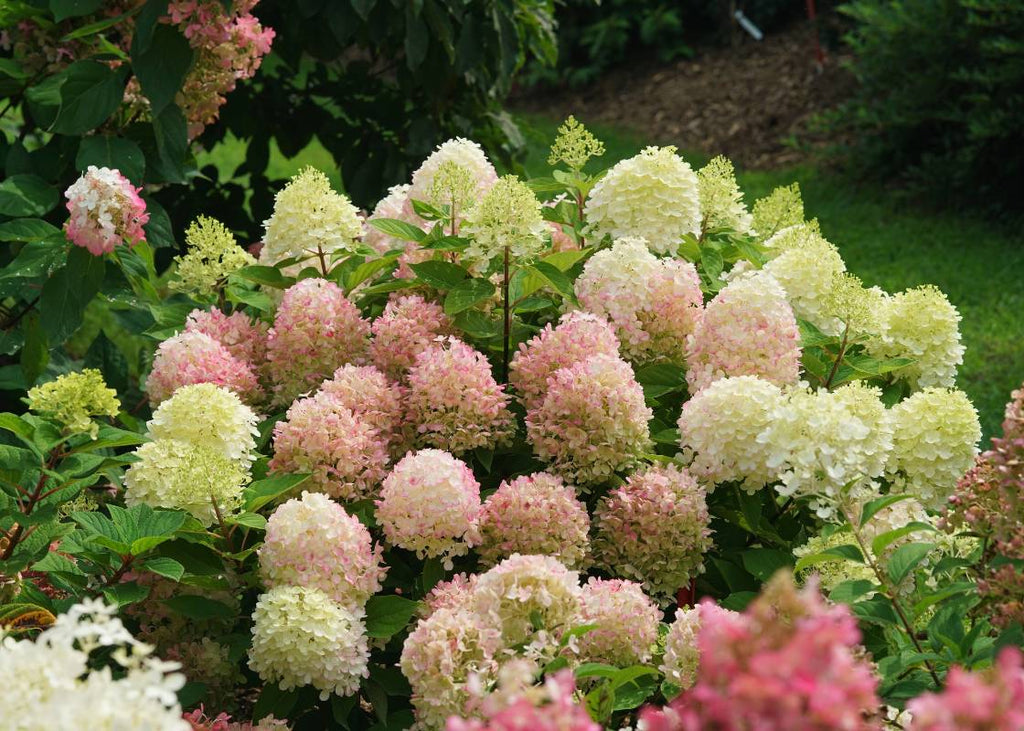Are hydrangeas deer resistant? Sadly, no. But here's what you can do a

If I had a nickel for every time someone asked me if hydrangeas are deer resistant, I'd have enough money to build a fence tall enough to keep the deer out of my yard and finally be able to grow hydrangeas again! Clearly, the answer to this question is a definitive no - hydrangeas are one of the least-deer resistant plants you'll find at the garden center.
That's not all there is to the story, though. You'll find certain authorities say that hydrangea are "seldom severely damaged" by deer, and that is true when it comes to the stems and leaves. What this fails to acknowledge is that they relish the flowers in particular, and often eat them when they are still tiny buds and not even visible to the human eye yet. So while deer may not kill or severely disfigure a hydrangea plant, they'll leave it flowerless, and let's face it: you're probably not growing the hydrangea for its leaves. So, what's a hydrangea-loving homeowner to do? You have a couple of options.
Option 1: Install a physical barrier to prevent their access to the plant.
This might mean a full-on fence that they cannot jump over, but this may be kind of extreme and expensive (not to mention prohibited by a lot of building codes in residential areas due to the height required). However, it can also be something as simple as draping deer netting over the plant. This plastic mesh prevents feeding and becomes almost invisible, thanks to its fine threads and black color. Deer netting will need to be re-positioned in late autumn, when the plant is completely dormant, to account for the growth the plant has put on over the previous season. This is especially crucial for old-wood blooming hydrangeas, since the flower buds for the following season are already on the plant and the deer are extra-hungry.
Option 2: Repellent sprays.
Typically made out of foul-smelling ingredients like putrified egg solids and dried blood, repellent sprays usually prevent deer from approaching the plant in the first place, and should they give it a try, prevent damage with their awful taste. Unfortunately, this also means that they tend to smell pretty awful to humans and pets as well. The odor usually dissipates within 24 hours of application. Quality repellents are quite long-lasting, but do need to be reapplied as the plant puts on new growth, and you will need to be especially vigilant when the buds begin to develop in late spring, and all the way through blooming. There are many good repellents on the market, and I've had good success with Plantskydd and Liquid Fence.
You may find repellent granules out there that don't need to be mixed and sprayed, but in my experience with very heavy deer pressure, these aren't effective. You may also find coyote urine sold as a deer repellent at your local garden center. This can be effective in the short-term, but since it only works when freshly applied, it wears off quickly. Also, if coyotes are already active in your area, deer may not be threatened by their implied presence.
Option 3: Garden "hacks".
Finally, there are many other ostensibly simple solutions that may or may not be effective, or only effective briefly, depending on the intensity of the deer pressure. These include strategies like hanging Irish Spring soap around your yard, or placing hair from a salon or barbershop around your plants. Neither of these have had any impact in my garden (believe me, I tried!), but I live in a very residential area and the deer are very bold. Some claim that having a dog or outdoor cat can have a protective effect, but these have had no impact on deer visits to my yard, either - in fact, they regularly jump my neighbor's five-foot-tall picket fence to eat her hydrangeas and roses, despite two dogs regularly using the space, and several visiting neighborhood cats. All this said, it's always a good idea to start with the simplest solution and see if it works. Hopefully, it will for you and your deer!
One final tidbit: not all hydrangeas are equally susceptible to deer damage. Read our blog ranking the main types of hydrangeas according to their deer resistance.
About the author: Stacey Hirvela is a professional horticulturist who has worked in gardens from the rooftops of Manhattan to the suburbs of Detroit. When she purchased her first home in a small town in West Michigan, she was surprised to find that despite its downtown location, it was visited nightly by a herd of deer that has only grown in the ensuing years. Gardening in these conditions is more challenging, but more enlightening, than any previous experience!
